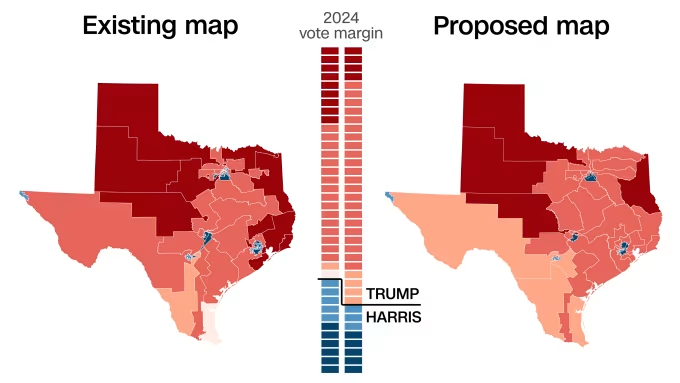If passed on Nov. 4, Prop 50 would temporarily redraw congressional district maps. As a direct response to gerrymandering in Texas, it will play a key role in protecting Democratic voice in the House of Representatives by gaining five additional seats, balancing out the new Republican seats. It is a vote for democracy, and a vote against Donald Trump.
Congress is the highest power to directly keep the president in check—a man who, in his first term, said the Constitution gave him “the right to do whatever I want.” Protecting Congress from rising authoritarianism is key to a positive shift in American politics. Under the current administration, ICE has been raiding cities, the National Guard has been deployed against American citizens (costing hundreds of millions to the American taxpayer), and democracy has been undermined at every turn. Public confidence in government is abysmal.

The main issue with Prop 50 is that it sets back the non-partisan approach to redistricting. Since 2010, the California Citizens Redistricting Commission has been responsible for redrawing the maps every 10 years, and is made up of five Democratic, five Republican, and four non-partisan members. However, Prop 50 was drawn by members of the state legislature, not the commission. Despite this, the controversy may be overstated—after all, the commission will be responsible for redrawing new maps again in four years, in 2030. Only 10 other states have commissions for redistricting, meaning the party in power (Democratic or Republican) is responsible for drawing the maps.

Redistricting typically happens about every 10 years, based on the US census or by court order. The goal of redrawing the maps is to address the change of number of people living in a particular area, so that all congressional districts are drawn to have approximately the same population. However, Texas’ mid-decade redistricting happened without a census or court order, and other Republican-dominated states have attempted to do the same.
Efforts towards non-partisan progress to prevent gerrymandering have been corrupted for different party agendas, and voters are left unheard. There’s an erosion of public trust in the electoral process that has led to disillusionment with the government. Temporary partisan redistricting may be the best path forward. California has attempted to reduce partisanship and approach redistricting with “fairness,” but other states continue to play by the old rules.
The issue is that there is no strong federal oversight because the Supreme Court ruled that gerrymandering is uncheckable by the federal courts. This means the responsibility is on the legislative branch, but mostly falls on state authority because Congress usually defers to the states to draw their own maps (which may be subsequently challenged in state supreme courts). Importantly, the proposition calls for a significant change to federal law and an amendment to the U.S. Constitution to require redistricting be done by “fair, independent, and nonpartisan redistricting commissions nationwide.”
The Election Rigging Response Act (Prop 50) was introduced by Governor Gavin Newsom as a direct response to redistricting in Texas. Republican lawmakers drew maps to potentially win 30 of 38 congressional districts, as pressured by the president to prevent a repeat of the 2018 Democratic takeover of the House. These additional seats for one of the most populous states would be counteracted by the proposition. It is not about playing dirty, it is about leveling the playing field.

Gerrymandering is an unfortunate reality across state lines and all over the country. It fundamentally undermines the basis of fair and competitive elections, and leads to increased partisanship and political extremism. If politicians only have to appeal to voters with their same views, they have no incentive to compromise with other lawmakers.
A measure of how much partisan gerrymandering exists in a legislative map is called the efficiency gap. It shows the difference in “wasted votes” between the two major parties as a percentage of the total votes cast. While the redistricting would temporarily increase the efficiency gap, the passage of this proposition is a necessary and defensive measure to partisan election-rigging by Republicans in Texas.

Opponents of Prop 50 believe that it is a power grab for Newsom and other politicians—but the redistricting only applies to congressional districts, not those of the state legislature. Californians’ voices will still be heard representatively at the state level. The proposition focuses on mitigating the massive power imbalance in the federal House of Representatives, especially if the GOP is successful in continuing to gerrymander for more seats.
Although many are concerned at the cost of the redistricting, the fiscal impacts of the proposition are massively overestimated. The majority of the cost would be to individual counties (which would be approximately the same cost as deploying the National Guard to Los Angeles one time), and the state cost would only amount to .1% of the state’s roughly $220 billion General Fund budget which covers most public services (not a waste of taxpayer money).
A “Yes” vote is a path forward—despite the temporary partisan move—to ensure a fair national balance while simultaneously pushing for federal reform requiring nonpartisan redistricting commissions nationwide. It’s not about just district lines, but preserving democracy and preventing authoritarianism.





